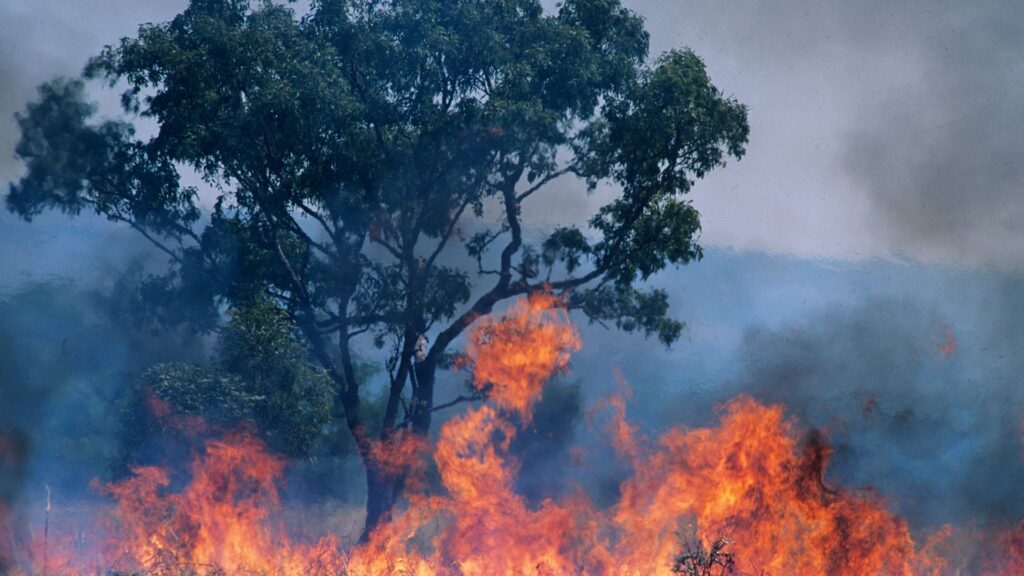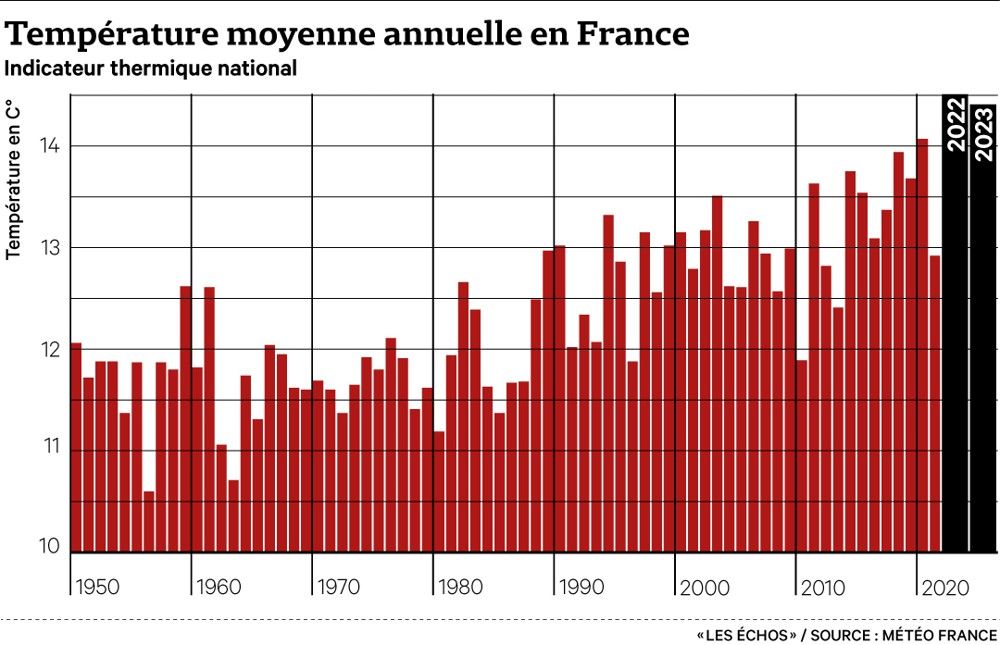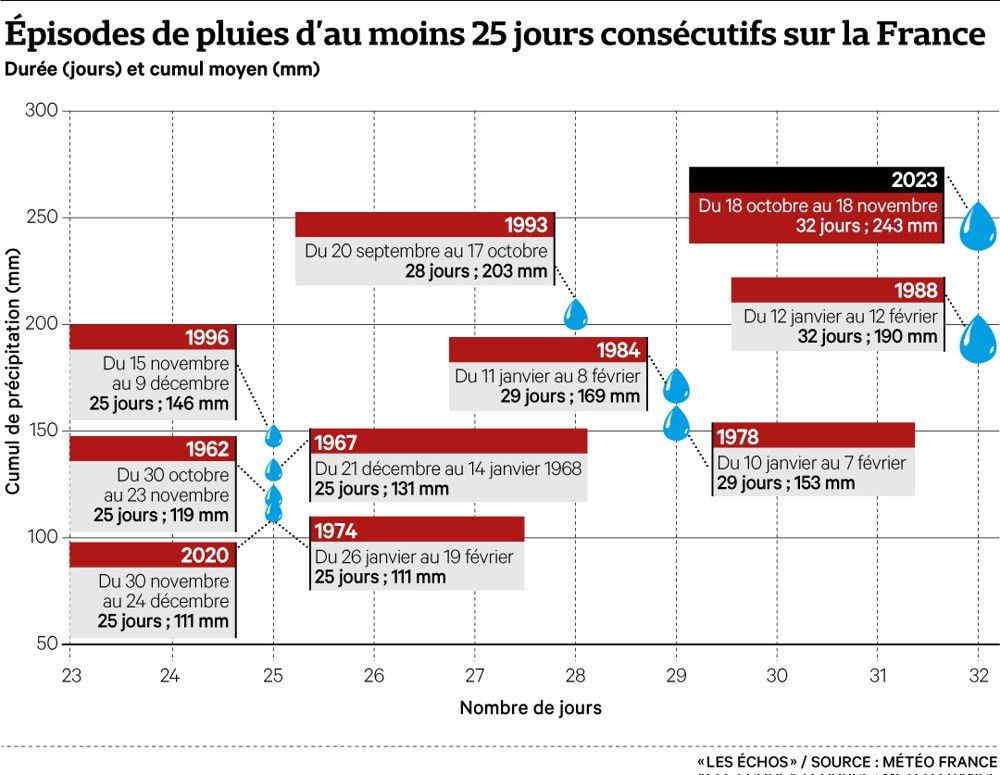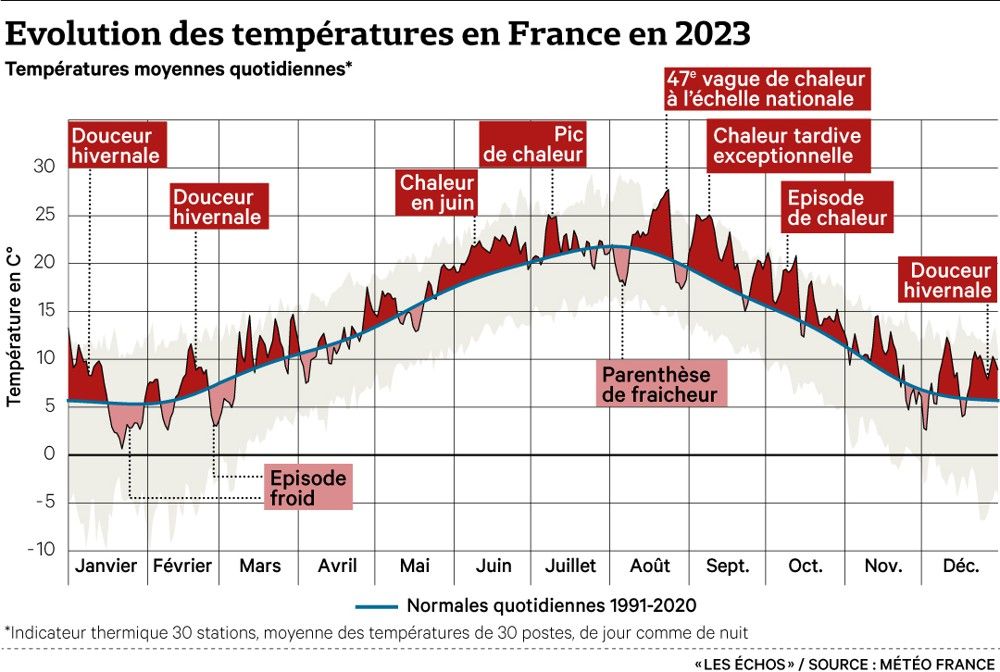Real Estate: The four climatic risks affecting property value
Floods, storms, coastal erosion, drought, and fires. With global warming, what were once exceptional climate events are becoming more frequent across all regions of France. This worsening could ultimately negatively impact the value of a property. Here are four climatic risks affecting property value to consider when purchasing.

With the general rise in temperatures, climate risks that could eventually affect the value of a property are increasing. From floods to drought, submersion, or lack of snow, the list of climate degradations is growing. It’s therefore advisable to be well-informed before buying.
Besides the legal obligations following a real estate transaction (natural risks and pollution report), it’s important to seek all useful information about the surrounding environment, notably on the government site georisques.gouv.fr.
However, this topic is constantly evolving. “As the climate continues to deteriorate, some areas are newly affected by risks that they had never faced before. At the same time, an identified risk may never materialize,” comments Thibault Laconde, president and co-founder of Callendar, a site specializing in climate risks.

Moreover, “the notion of risk remains quite relative regarding valuation. As of now, it’s still the location that determines the price,” acknowledges Laurence Leguil, vice-president of the legal studies institute of the Superior Council of Notaries.
Four climatic risks
Coastal Erosion
On the coastline, the risk of coastal erosion is now well identified. Several cases of cliff collapses or dune disappearances have already wiped some constructions off the map and weakened others nearby.
Since January 1, 2023, under the climate and resilience law of October 1, 2022, exposure to coastal retreat must now be mentioned in real estate advertisements. “The buyer must be informed in advance of a potential exposure to this risk. A document on this subject must be included in the sale deed annex,” states Thibault Laconde.
Floods
Floods are becoming more frequent throughout France. The most recent major event occurred last November and January in several municipalities in the Pas-de-Calais department. The result: uninhabitable houses destined for demolition, some of which should theoretically be bought back by the State. Although it’s still a bit early to assess the consequences, “there will be an impact on local property prices,” suggests Edouard Grimond, spokesperson for real estate at the Superior Council of Notaries.
“At the moment, we are being called by insurers to appraise damaged properties. Even when restored, their values should be 20% to 30% lower than they were before the flood,” indicates Arnaud Merlin of L’Adresse agency in Saint-Omer. “Before this major climate event, the flood risk was known, but it had no effect on prices,” he adds.

In the other end of the country, near Arcachon, water is also a danger with the risk of submersion. Certain neighborhoods of this town, such as La Pointe de l’Aiguillon or Les Prés-Salés, are affected. “Although known, this risk does not scare buyers and has no negative impact on values. It must be said that in these areas, supply is rare and properties offer sea views,” says Christophe Voisin of Orpi Arcachon agency.
In Morbihan, “half of the Gâvres peninsula is in a flood zone, particularly in its eastern part. There is a slight price differential between the East and the West. Some sensitive buyers might negotiate prices slightly, while the most concerned will look elsewhere,” notes Jérôme Germond, director of Laforêt Lorient.
Lack of Snow
With glacier melt and reduced snowfall, the allure of “white gold” may fade. “The lack of snow already clearly impacts resorts below 1,500 meters of altitude,” asserts Thomas Arnéodo, president of the “Holiday Rentals” commission at the FNAIM Savoie-Mont-Blanc chamber.
“Some ski enthusiasts owning property in these areas are considering selling for this reason. They know they will have to pay more to find snow,” he adds.
It’s worth noting that property prices per square meter in the mountains vary greatly depending on altitude and resort popularity. Facing these major climate changes, some mountain resorts have chosen to adapt their model. “They are focusing on summer visits with a varied activity offer,” says Thomas Arnéodo. This attractiveness has a direct effect on visitation and reflects on property values.
“The 2024 Panorama” by Cimalpes, an annual study on mountain real estate, indicates that “global warming is turning the mountains into a cool summer destination,” noting that “off-season activities will gradually compensate for the shortened winter season.”
Drought
With increasing heatwaves, constructions are under significant stress. Some are affected by soil shrinkage and swelling (RGA), causing cracks and sometimes threatening the structure’s stability.
“A villa I had for sale in Hyères had visible damage. Located on a sloping plot, it had cracked at the façade and stairs, though the foundations were untouched. This property was estimated at 550,000 euros but sold for 450,000 euros due to this issue,” says Béatrice Favat-Poinsot of L’Adresse agency in La Crau.

In Grabels, near Montpellier, “a vineyard house with a significant crack was appraised at the request of a potential buyer. The reassuring report led to a price negotiation within the sector’s average,” notes Frédéric Natéra of L’Adresse agency in Grabels.
Drought also leads to increased fire risks, which can deter some buyers.
Par Laurence Boccara – Les Echos – Publié le 6 mars 2024 à 12:00Mis à jour le 6 mars 2024 à 13:36
Discover how climate risks could impact your property investment with Data4Risk. Get detailed insights on floods, storms, coastal erosion, drought, and fires in your area. Stay informed and make smarter decisions with our comprehensive risk analysis.
